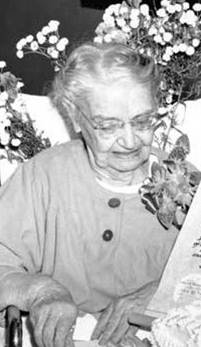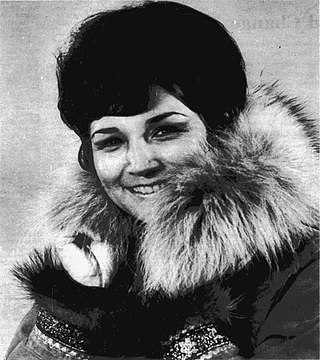
Shaktoolik is a city in Nome Census Area, Alaska, United States. At the 2010 census the population was 251, up from 230 in 2000. Shaktoolik is one of a number of Alaskan communities threatened by erosion and related global warming effects. The community has been relocated twice.

Unalakleet is a city in Nome Census Area, Alaska, United States, in the western part of the state. At the 2010 census the population was 765, up from 688 in 2000. Unalakleet is known in the region and around Alaska for its salmon and king crab harvests; the residents rely for much of their diet on caribou, ptarmigan, oogruk, and various salmon species.

The Inupiat are a group of Alaska Natives whose traditional territory roughly spans northeast from Norton Sound on the Bering Sea to the northernmost part of the Canada–United States border. Their current communities include 34 villages across Iñupiat Nunaat, including seven Alaskan villages in the North Slope Borough, affiliated with the Arctic Slope Regional Corporation; eleven villages in Northwest Arctic Borough; and sixteen villages affiliated with the Bering Straits Regional Corporation. They often claim to be the first people of the Kauwerak.

Iñupiaq or Inupiaq, also known as Iñupiat, Inupiat, Iñupiatun or Alaskan Inuit, is an Inuit language, or perhaps group of languages, spoken by the Iñupiat people in northern and northwestern Alaska, as well as a small adjacent part of the Northwest Territories of Canada. The Iñupiat language is a member of the Inuit-Yupik-Unangan language family, and is closely related and, to varying degrees, mutually intelligible with other Inuit languages of Canada and Greenland. There are roughly 2,000 speakers. Iñupiaq is considered to be a threatened language, with most speakers at or above the age of 40. Iñupiaq is an official language of the State of Alaska, along with several other indigenous languages.

The Unalakleet River in the U.S. state of Alaska flows southwest 90 miles (145 km) from the Kaltag Mountains to near the town of Unalakleet, on Norton Sound of the Bering Sea.

The Yupʼik or Yupiaq and Yupiit or Yupiat (pl), also Central Alaskan Yupʼik, Central Yupʼik, Alaskan Yupʼik, are an Indigenous people of western and southwestern Alaska ranging from southern Norton Sound southwards along the coast of the Bering Sea on the Yukon-Kuskokwim Delta and along the northern coast of Bristol Bay as far east as Nushagak Bay and the northern Alaska Peninsula at Naknek River and Egegik Bay. They are also known as Cupʼik by the Chevak Cupʼik dialect-speaking people of Chevak and Cupʼig for the Nunivak Cupʼig dialect-speaking people of Nunivak Island.
Jimmy B. Bedford was the former head of the University of Alaska Fairbanks journalism department. He is also the author of Around the World on a Nickel (1967). There is a Jimmy B. Bedford Memorial Scholarship set up in his honor. He was presented with the Howard Rock Award in 1977. He also contributed to the Concise English Afghan Dari Dictionary, revised and enlarged, with Sardar M. Ah. Sakaria of Kabul University, published in January 1973.

The Fairbanks North Star Borough School District is a public school district based in Fairbanks, Alaska (USA). With a student enrollment of slightly over 14,000, it is the state's second largest public school district.

Changunak Antisarlook Andrewuk was a Inupiaq businesswoman who became one of the richest women in Alaska due to her work in the reindeer industry.
Edith Rose Bullock was an American businesswoman and politician active in Alaska during its territorial and early statehood eras. She was named "Alaskan of the Year" in 1979, making her the first woman to be given the title. Bullock was also the first woman to be named to the Alaska Chamber of Commerce. In 2009, she was named to the inaugural induction class of the Alaska Women's Hall of Fame.

Orah Dee Clark (1875–1965) was an American educator. She was the first superintendent for the first school in Anchorage, Alaska. In 2009, she was named into the Alaska Women's Hall of Fame.
Edna Ahgeak MacLean a.k.a. Paniattaaq is an Iñupiaq academic administrator, linguist, anthropologist and educator from Alaska, who has specialized in the preservation and revitalization of the Iñupiaq language.
William Earnest Beltz was an American politician and carpenter.

Mary Jane Fate was a Koyukon Athabascan activist. She was a founding member of the Fairbanks Native Association and the Institute of Alaska Native Arts and worked as a lobbyist for the Alaska Native Claims Settlement Act. She co-founded the Tundra Times newspaper and served as a director of the corporate board for Alaska Airlines for over two decades. She served as co-chair of the Alaska Federation of Natives between 1988 and 1989, the first woman to serve in the capacity, and was the third president and a founding member of the North American Indian Women's Association. Fate has served on various commissions and national studies of issues which affect indigenous people. She was the project manager of a study of women and disability, served as the only indigenous member of the U.S. Arctic Research Commission and was a member of U.S. Census Advisory Committee on indigenous populations. She has received numerous honors and awards for her activism on behalf of Native Americans and was inducted into the Alaska Women's Hall of Fame in 2014.
Arne Beltz was an American nurse best known for her work in public health. The Arne Beltz Building, which houses the Anchorage, Alaska Department of Health and Human Services, was named in her honor in 1990. In 2013, Beltz was inducted into the Alaska Women's Hall of Fame.

Sadie Neakok or Tagiagiña was the first female magistrate in Alaska. She served in Alaska's Second Judicial District in Utqiaġvik, Alaska.

Brenda Tiggausina Itta is an Iñupiaq activist and former legislator in Alaska's House of Representatives.
Vera Kingeekuk Metcalf is an educator and advocate known for her work in the preservation of the traditions and language of Alaska Native people. In 2019, she was inducted into the Alaska Women's Hall of Fame.

Laura Mae Bergt was an Iñupiaq athlete, model, politician, and activist for the Iñupiat and other Indigenous Alaskans. Born in the Northwest Arctic Borough of Alaska to bi-racial parents, she grew up in Nome and Kotzebue before attending high school in Sitka. Involved in the Native Olympic movement, she was both a nine-times winner of the Arctic Circle blanket toss event and served as chair of the World Eskimo Indian Olympics in 1966. She worked as a promoter for the new state of Alaska attending trade shows and making marketing appearances as a spokeswoman and guest on radio and television programs. From the 1960s, she worked in various policy positions at the tribal, local, state, and national level to address issues like disability, education, employment opportunities, housing, and poverty, and promoting the rights of Indigenous people.

Lael Warren Morgan was an American journalist, author and historian who wrote books about Alaska's history and people.















